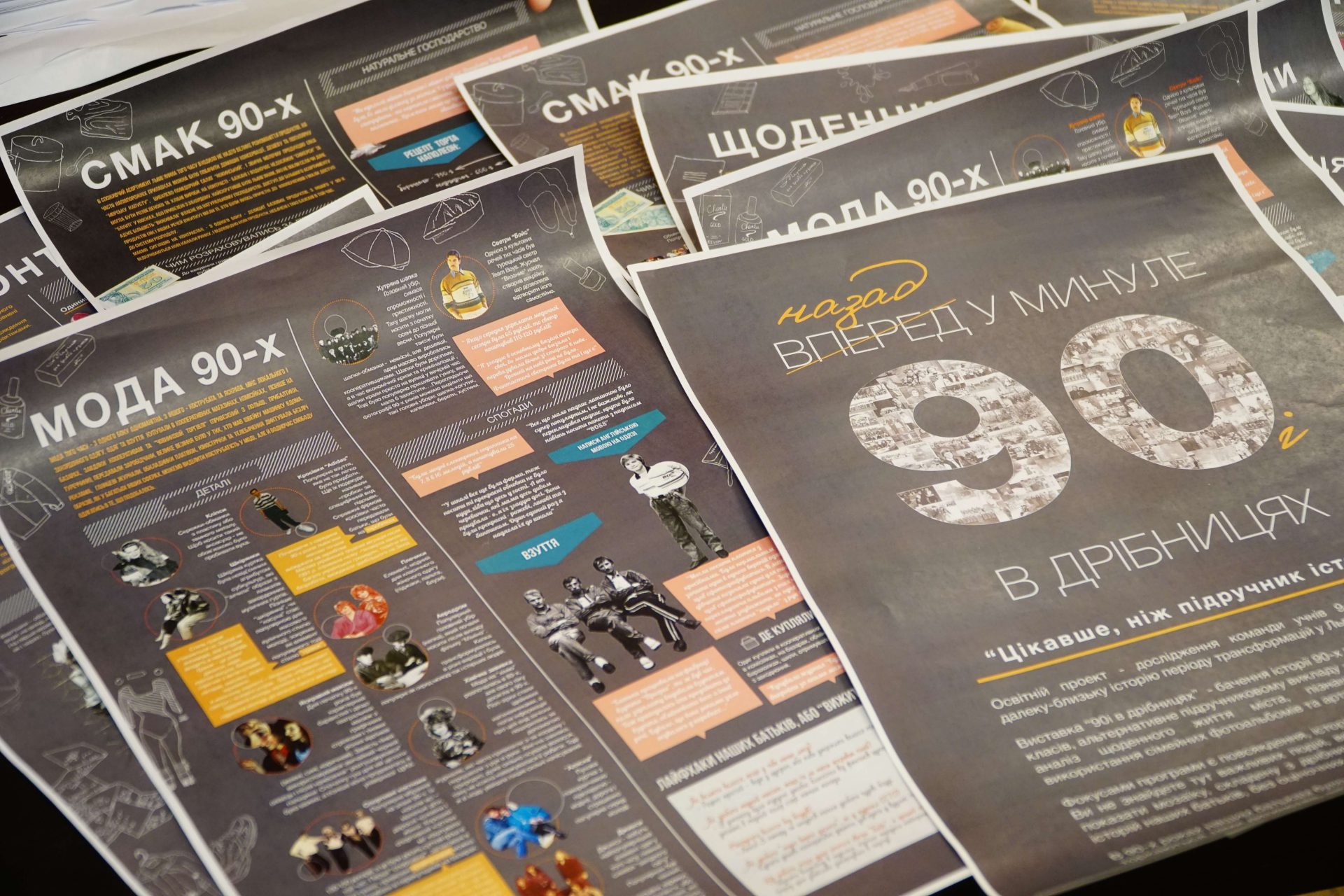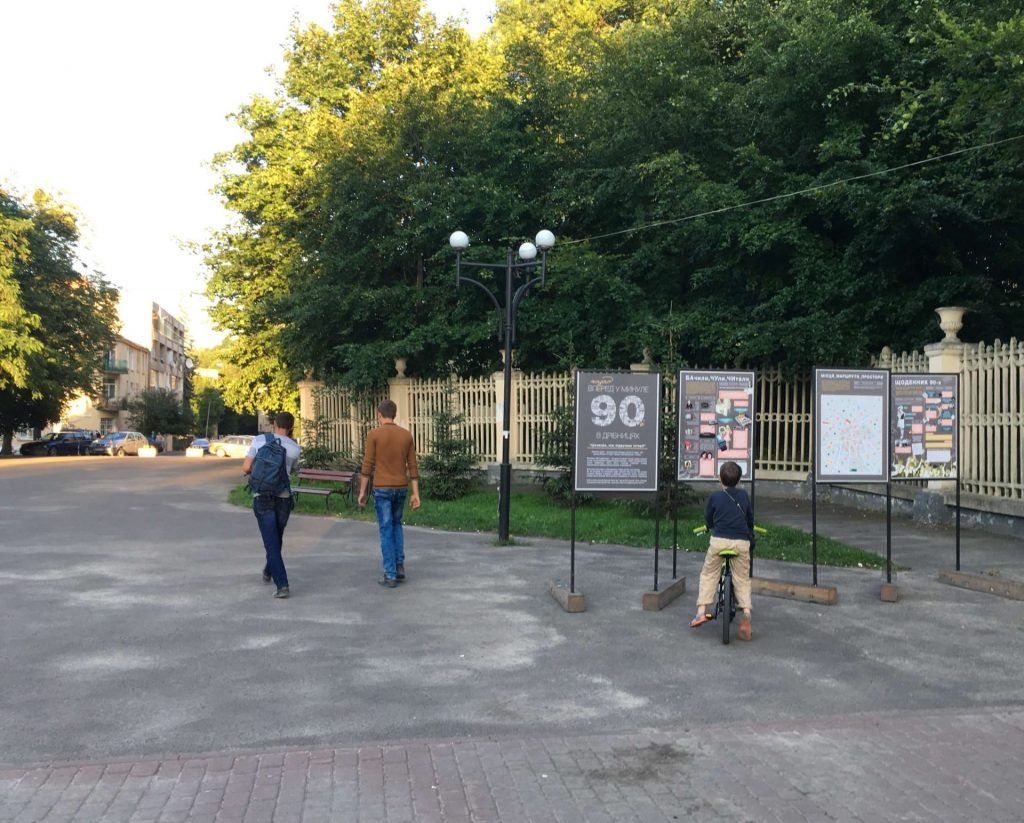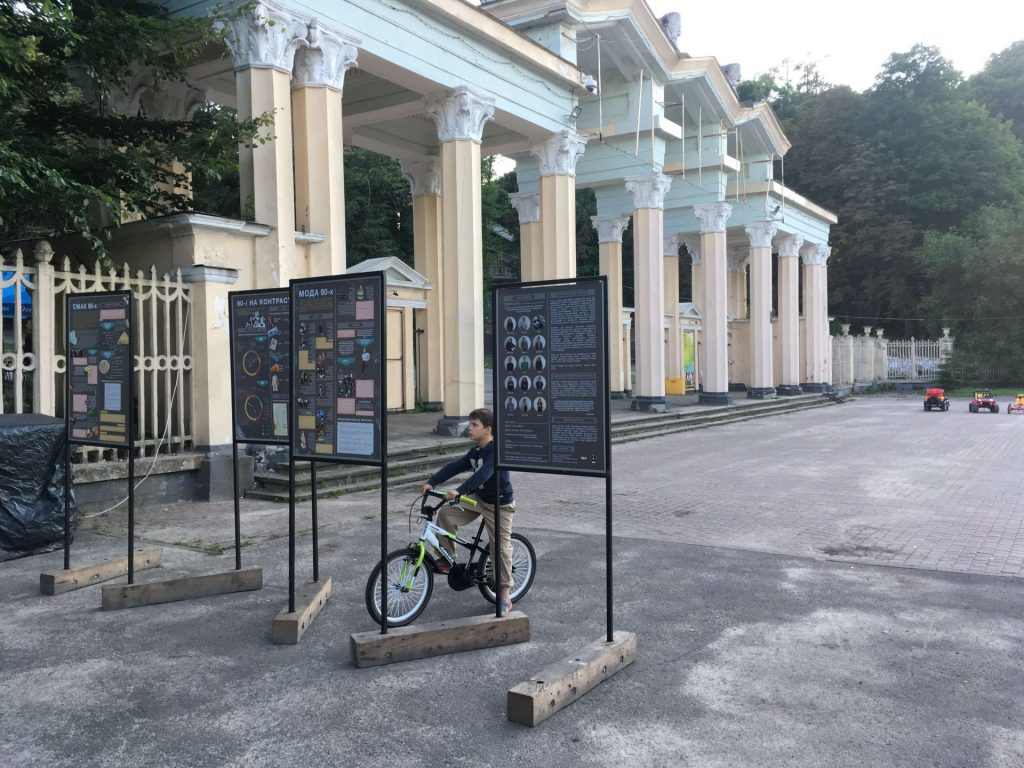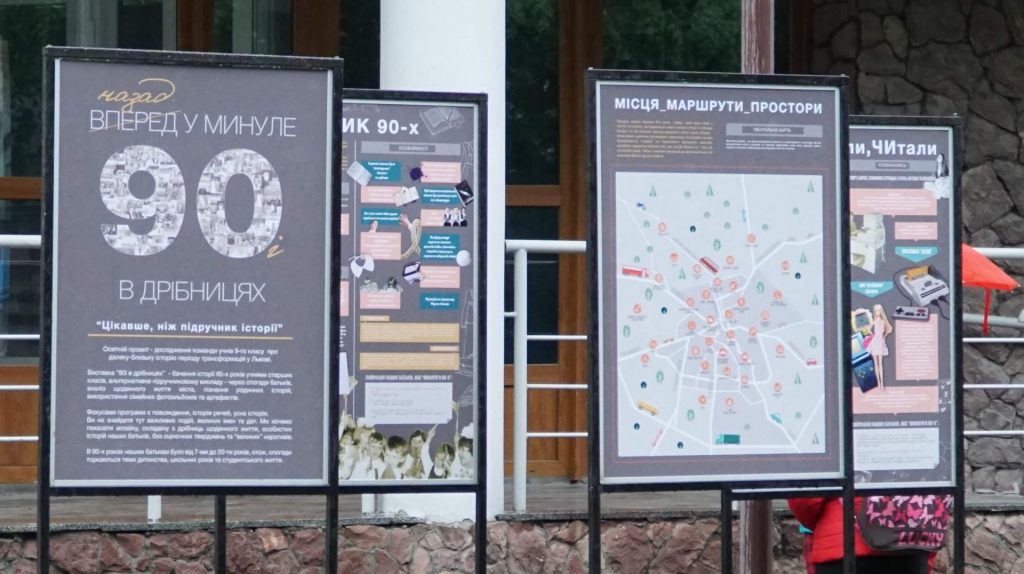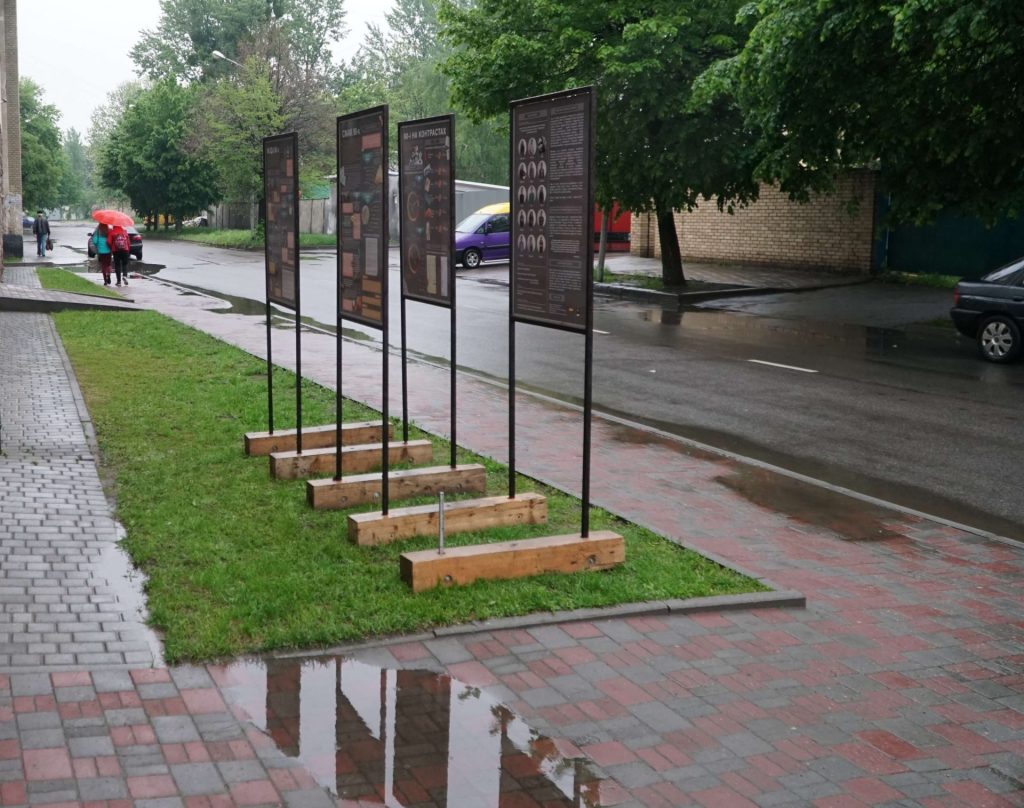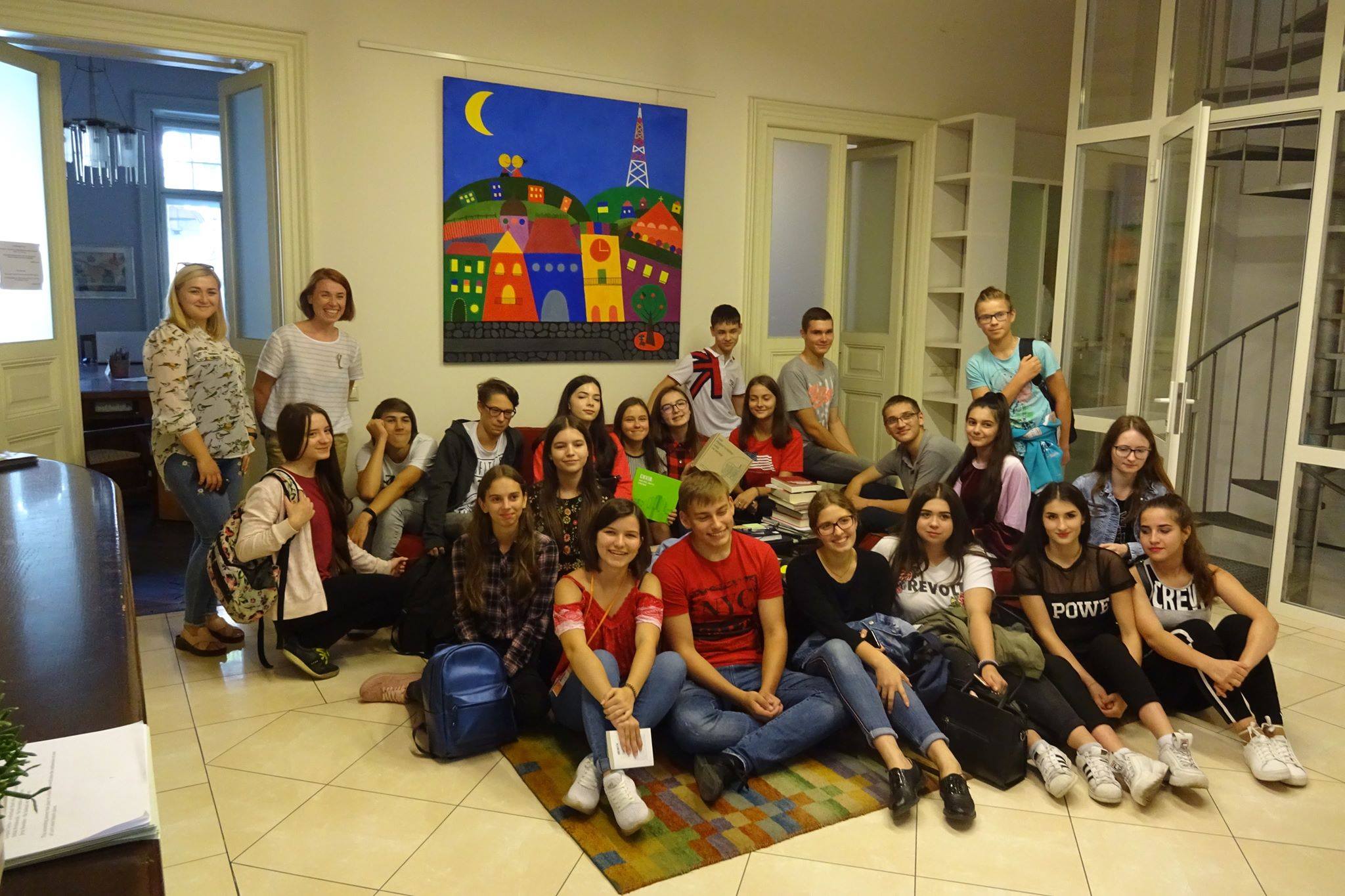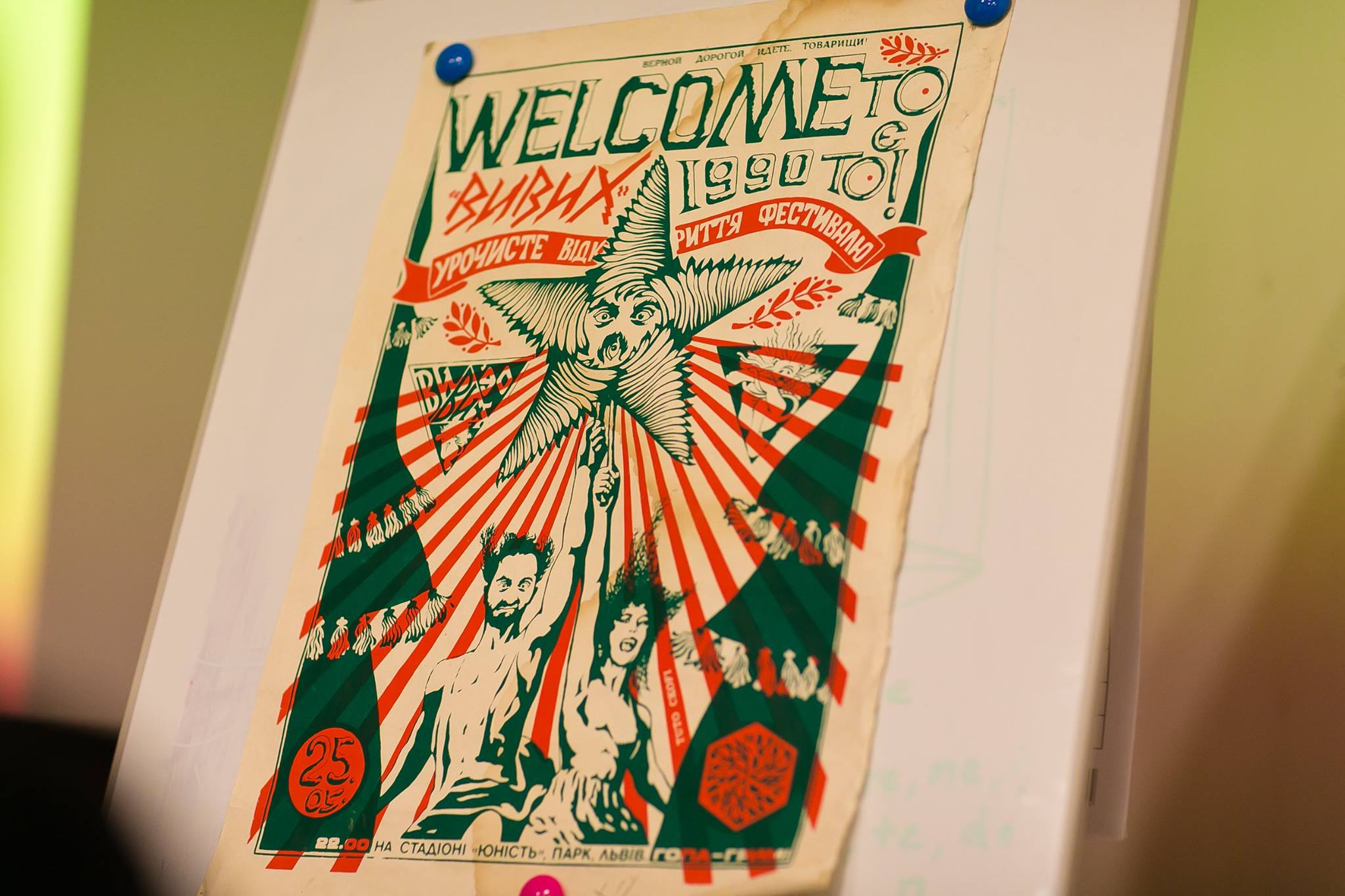Forward to the Past. 1990s in Detail
July - September 2017
Bohdan Khmelnytskyi Park of Culture
The exhibition was designed by the 9th-grade pupils. Their vision is alternative to the text-book presentation – their interpretation relies on memories of their parents, the analysis of everyday life in the city, the family photo albums and artefacts. The exhibition does not display important events, big names or dates. It shows the mosaic of everyday details, personal stories of parents, with no judgements or "grand" narratives.
The stands are divided into 6 sections, according to the following topics:
"The Fashion of 1990s"
On the one hand, the fashion of 1990s is monotone, while on the other hand, it is bright and clumsy, a mix of local and foreign experience. What were they wearing, where did they buy their clothes, how did they "survive" in crisis, who were profiteers, black marketeers, suitcase traders, and seasonal workers.
"The Taste of the 1990s"
Consumption assortment range of Lviv citizens, long lines from the memories of parents, recipes and contrasts with the deficit of products on the one hand, and snickers candy bars and pepsi in the kiosk windows.
"The Grade Book of the 1990s"
School uniform, ink pens, the range of school menus, obligatory community clean-up days – the recorded details about some of the brightest periods of the childhood years, the school time.
"SEen, HEard, REad"
The 1990s are best remembered for huge numbers of new things, such as in cinema, in music, in literature, on TV and in media. We had "Hadiukin Brothers," "The Dead Roosters," and a music phenomenon of the "A Territory." Besides, the 1990s were the epoch of first Ukrainian FM stations, promotion of new newspapers and magazines. While in 1991, Ukraine first learned that "The Rich Can Cry Too."
"The 1990s n Contrasts"
Infographics to compare elements of the everyday life of parents with our everyday practices.
"Places_Spaces_Routes"
The trip along the imaginary Lviv of the 1990s, the way it stayed in our memory and stories, the space of the everyday life of our parents – entertainment places, sites for learnings, consumption and leisure. The "sites" are marked on the map according to the mental maps their parents drafted during the interviews.
The exhibition resulted from the three months program "Forward to the Past." It is important that program participants worked on the project step by step – from ideas to presenting end results. The pupils collected, analyzed and categorized the materials, they conducted interviews with parents, relatives, and eye-witnesses. They worked on family photos and memories and searched for artifacts. The program also included meetings with experts (project managers and researchers of the Center), and work on the visual part with illustrators and designers. The research focuses are on the history of everyday life, history of things, places and spaces, oral history, childhood in the transformation period (late 1980s – early 1990s) in Lviv.
The project is part of public and education programs at the photo exhibition by Tadeusz Rolke "Tomorrow Will Be Better."
The exhibition has been travelling in its "street-format" around different locations for two months – since May, 3, it was available at vul. Zhovkivska, 53; since May, 20 – in the courtyard of the ETC Economic Lyceum (Khvyliovoho, 35), since July, 5 – next to the main entrance to Bohdan Khmelnytskyi Park of Culture.
Exhibition Authors: Pupils of the 9th grade of the Training and Education Center "Engineering and Economics School – Lviv Economics Lyceum": Maksym Azarov, Diana Kylyn, Viktoriya Venher, Orest Kishchak, Dmytro Markin, Yaryna Matsura, Viktoriya Myhal, Ruslan Holynskyi, Ihor Byk, Ihor Yohanik, Olha Nikelska, Vasylyna Polotniuk, Vasyl Skasko, Yustyna Shpak, Iryna Hirman, Artur Biliak.
Design by: Oksana Demkiv
Assembling by: Yevhen Chervonyi
Project coordinators: Zoriana Obidina, Khrystyna Boyko
Acknowledgements to: Natalia Otrishchenko, Iryna Sklokina, Oleksandr Makhanets
Visuals: Photographs by Tadeusz Rolke, family albums of the project participants, images from open resources
